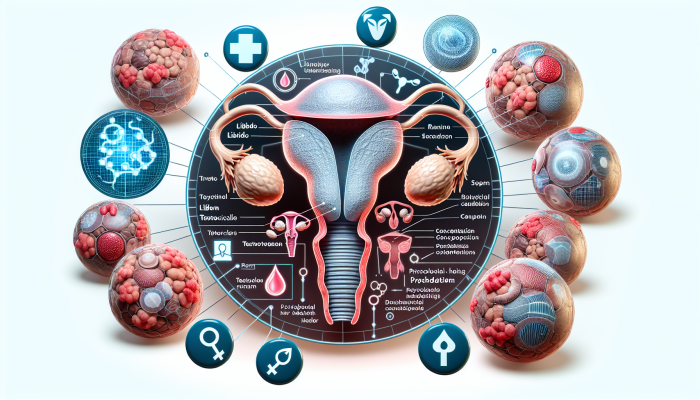In-Depth Exploration of Testosterone Testing Standards for Optimal Health Improvement
Testosterone is widely acknowledged as a critical component of hormonal health, essential for people of all genders. This vital steroid hormone significantly contributes to muscle growth, enhances sexual desire, helps maintain bone density, and supports emotional stability. Achieving optimal levels of testosterone can profoundly enhance quality of life, influencing critical factors such as <a href="https://ad4sc.com/budget-friendly-energy-hacks-for-a-cozy-winter-home-2/">energy levels</a>, mood regulation, and cognitive capabilities. Hence, understanding the parameters of testosterone testing is crucial for identifying hormonal discrepancies and improving overall health.
Exploring the Essential Function of Testosterone in Holistic Health

In males, testosterone is primarily produced in the testicles, while females generate it in smaller quantities from their ovaries. Although often linked to male characteristics such as muscle mass and body hair, testosterone is equally critical for various physiological functions in women. Fluctuations in testosterone levels can significantly influence libido, sperm production, and cognitive clarity. Insufficient testosterone can lead to numerous health issues, including depression, ongoing fatigue, and diminished sexual performance.
Additionally, testosterone's impact extends into the realm of mental health. Studies reveal that maintaining adequate testosterone levels can boost mood and enhance resilience against stressors. This underscores the necessity of consistent monitoring and comprehending your testosterone levels, particularly if you notice shifts in your emotional or psychological state.
Key Insights into the Development of Testosterone Testing Standards
The establishment of testosterone testing standards is grounded in extensive clinical investigations involving healthy demographics. These studies consider various elements such as age, gender, and the timing of the tests. Naturally, testosterone levels exhibit diurnal variations, typically peaking in the morning. Consequently, laboratories adjust their standards to account for these physiological shifts.
It is crucial to acknowledge that reference ranges can vary significantly among laboratories, primarily due to differences in testing methodologies and the demographics of the populations studied. Therefore, what is deemed “normal” in one laboratory might not align with findings from another. This variability highlights the importance of consulting a healthcare professional for a precise interpretation of your results, taking into account your unique health context.
Understanding the Key Factors Contributing to Variations in Testosterone Testing Standards Across Laboratories
The differences in testosterone testing standards between laboratories can stem from multiple factors. Each laboratory utilizes its testing techniques, which may vary in precision and sensitivity. For instance, some labs might employ immunoassays, whereas others might leverage advanced technologies like liquid chromatography. These methodological differences can lead to discrepancies in results.
Moreover, the reference groups chosen to set these standards can greatly influence the resulting values. If a laboratory predominantly tests individuals from a specific age or ethnic group, its established norms may not accurately represent the wider population. Therefore, obtaining your results from a reputable laboratory and discussing them with a healthcare professional is essential for contextualizing your results within your medical history.
Deciphering Your Testosterone Testing Results: Essential Insights for Improved Understanding

Understanding testosterone test results can seem daunting initially; however, it becomes much clearer once you familiarize yourself with the established standards and their implications. Typically, testosterone test results are measured in nanograms per deciliter (ng/dL), with variations influenced by factors like age and gender.
A Methodical Approach to Analyzing Your Testosterone Test Results
The first step in evaluating your testosterone test results is to compare them against the testosterone testing standards. Generally, testosterone levels in men usually range from 300 to 1,000 ng/dL, while women typically range from 15 to 70 ng/dL. If your results are outside these established limits, further investigation may be warranted to identify any underlying causes.
It’s vital to interpret your test results within the context of your overall health. What may appear as low testosterone levels for one person could be entirely normal for another, depending on personal factors such as age and overall wellness. Consulting with a healthcare professional will help you assess your results concerning your comprehensive health profile and determine if additional testing or interventions are required.
Recognizing the Implications of Low Testosterone Levels
Low testosterone levels, clinically referred to as hypogonadism, can lead to various serious health consequences. Common symptoms include a notable decrease in libido, persistent fatigue, reduced muscle mass, and emotional disturbances. If you are experiencing any of these symptoms, it is advisable to consider undergoing a testosterone test to determine whether your levels fall below the normal threshold.
The causes of low testosterone can be diverse, encompassing medical conditions and lifestyle factors. Issues such as diabetes, obesity, or disorders affecting the pituitary gland can impede testosterone production. Additionally, environmental factors such as exposure to harmful chemicals or endocrine disruptors may also contribute. A thorough medical evaluation is essential to accurately identify the cause and formulate the most effective treatment strategies.
Understanding the Health Risks Linked to Excessively High Testosterone Levels

On the other hand, abnormally elevated testosterone levels can also present health risks. High testosterone levels may be linked to medical issues such as testicular tumors or the misuse of anabolic steroids. Symptoms associated with high testosterone can include acne outbreaks, hypertension, and mood fluctuations, including increased aggression.
It is crucial not to jump to conclusions based solely on elevated test results. Engaging in a comprehensive dialogue with a healthcare professional is essential to thoroughly evaluate your findings and consider further testing to uncover any underlying issues. Additionally, discussing the potential dangers associated with high testosterone levels, including cardiovascular complications and other adverse effects, is vital.
Identifying Key Factors Influencing Testosterone Levels for Enhanced Health
Testosterone levels are dynamic and can be influenced by a multitude of factors. Understanding these influences empowers you to make informed decisions regarding your hormonal health.
The Impact of Age on Testosterone Levels
Age is a significant factor influencing testosterone testing standards. It is well-documented that testosterone levels in men start to decline gradually around the age of 30. This decline, while typically slow, can have substantial implications for both physical and mental health over time.
Women, although generally having lower testosterone levels, also experience a decrease with age, particularly following menopause. This reduction can lead to symptoms such as fatigue, decreased libido, and mood swings. Therefore, it is crucial for all individuals, regardless of gender, to monitor their testosterone levels as they age and seek medical advice if signs of hypogonadism emerge.
Lifestyle Choices and Their Impact on Testosterone Levels
Your lifestyle choices significantly affect the maintenance of optimal testosterone levels. Engaging in healthy habits, such as consuming a balanced diet, exercising regularly, and ensuring adequate sleep, can substantially support ideal hormonal levels. Research shows that physical activity, particularly resistance training, stimulates testosterone production.
Conversely, adverse factors such as obesity, a sedentary lifestyle, and chronic stress can disrupt hormonal equilibrium. Elevated stress levels, in particular, can trigger increased cortisol production, a hormone detrimental to testosterone synthesis. By incorporating stress-reduction techniques like meditation or yoga and embracing an active lifestyle, you can significantly enhance your hormonal health.
The Influence of Medications and Supplements on Testosterone Levels
Certain medications can profoundly influence testosterone levels. Corticosteroids, opioids, and some antidepressants may lead to decreased testosterone production. If you are taking medication and have concerns about your testosterone levels, it is wise to discuss this with your healthcare provider.
Conversely, certain supplements that claim to enhance testosterone levels, such as zinc and vitamin D, may offer benefits, especially for those with deficiencies. However, it is crucial to consult a healthcare professional before starting any supplementation. A balanced approach that emphasizes a nutritious diet and an active lifestyle is often the most effective strategy for sustaining optimal hormonal levels.
Recognizing Symptoms and Diagnostic Techniques for Abnormal Testosterone Levels
Identifying symptoms associated with abnormal testosterone levels is vital for early detection and timely interventions. This process typically includes physical evaluations and laboratory testing.
Common Symptoms Indicating Low Testosterone Levels
Symptoms linked to low testosterone levels can differ among individuals, but certain common signs may signal a hormonal imbalance. Chronic fatigue is frequently reported as one of the most significant symptoms. If you notice a substantial drop in your energy levels that appears disproportionate, it could be a warning sign.
A decline in libido represents another essential indicator. Men may find it challenging to achieve or sustain an erection, while women may notice a reduced interest in sexual activity. Furthermore, loss of muscle mass, weight gain, and emotional changes, including anxiety or depression, can also be associated with low testosterone levels.
When to Seek Professional Guidance for Testosterone Testing
It is advisable to consult with a healthcare professional if you are experiencing persistent symptoms or harbor specific concerns regarding your testosterone levels. Early assessment can be instrumental in uncovering potential underlying health issues and developing a suitable management plan.
If you are a man over 40 or a woman undergoing menopause, it may be particularly beneficial to discuss testosterone testing with your physician, even in the absence of symptoms. Regular screenings can assist in monitoring your testosterone levels and facilitating informed health decisions.
The Diagnostic Methodology for Assessing Testosterone Levels
The diagnostic process for evaluating testosterone levels typically commences with a medical consultation, during which your symptoms and medical history are thoroughly assessed. If your doctor suspects a hormonal imbalance, they may recommend a blood test to measure your testosterone levels.
Testing is usually performed in the morning when testosterone levels are at their peak. Should abnormal results be identified, further testing may be required to determine the underlying cause. This could involve assessments of pituitary function or additional hormonal evaluations. Accurate diagnosis is essential for developing an effective treatment plan.
Exploring Treatment Options for Addressing Abnormal Testosterone Levels
Upon identifying abnormal testosterone levels, a variety of treatment options may be available. The selection of an appropriate treatment often hinges on the underlying cause and individual preferences.
Established Strategies for Managing Low Testosterone Levels
Addressing low testosterone levels may involve testosterone replacement therapy (TRT), which aims to restore normal hormonal levels. TRT can be administered through various methods, including injections, gels, or transdermal patches. This treatment can effectively alleviate symptoms related to hypogonadism, such as fatigue, decreased libido, and impaired muscle health.
However, it is essential to discuss the potential benefits and risks of TRT with your healthcare provider. While many patients report relief from symptoms, associated risks may include cardiovascular issues and potential side effects. Regular monitoring of hormonal levels is often necessary to ensure the safety and effectiveness of the treatment.
Natural Strategies to Enhance Testosterone Levels
For those who prefer to avoid hormonal therapies, several natural methods can assist in boosting testosterone levels. Maintaining a healthy lifestyle characterized by a nutrient-dense, balanced diet is crucial. Foods rich in zinc, vitamin D, and omega-3 fatty acids can enhance testosterone production.
Engaging in physical activity, particularly resistance training, is another effective approach to stimulating testosterone synthesis. Additionally, employing stress management techniques such as meditation, yoga, or enjoyable recreational activities can help lower <a href="https://limitsofstrategy.com/acupuncture-for-healing-boost-recovery-after-surgery/">cortisol levels</a>, thereby supporting optimal hormonal balance.
Evaluating the Benefits and Risks Associated with Testosterone Replacement Therapy
Testosterone replacement therapy can offer numerous advantages, such as heightened libido, improved mood, and increased muscle mass. However, it also carries potential risks, including an elevated likelihood of cardiovascular issues, sleep apnea, and prostate complications.
Therefore, it is vital to carefully weigh the pros and cons of TRT. A comprehensive discussion with a healthcare professional is essential in determining whether this treatment aligns with your health objectives. Regular follow-up appointments are also necessary to monitor treatment effects and adjust therapy as needed.
Comprehending the Significant Effect of Testosterone Levels on Overall Health
Testosterone levels profoundly influence various aspects of health, including mental health, bone strength, and cardiovascular function. Understanding these correlations can help you manage your overall well-being more effectively.
The Connection Between Testosterone Levels and Mental Health
Research indicates that testosterone levels can have a significant impact on mental well-being. Low testosterone levels are frequently linked to mood disorders such as depression and anxiety. Individuals with sufficient testosterone levels generally demonstrate greater emotional resilience and improved quality of life.
Notably, addressing hypogonadism may also result in positive mental health outcomes. Many patients report improvements in mood and a reduction in depressive symptoms after achieving normal hormonal levels. This highlights the importance of monitoring testosterone levels, especially concerning mental health challenges.
The Essential Role of Testosterone in Supporting Bone Health
Testosterone is vital for promoting bone health, contributing to bone density and lowering the risk of osteoporosis. Adequate testosterone levels are crucial for maintaining bone mass and reducing the likelihood of fractures, particularly in older adults, as declining testosterone levels can lead to increased bone fragility.
Studies suggest that testosterone replacement therapy may positively influence bone density in both men and women experiencing hypogonadism. Consequently, monitoring testosterone levels and considering appropriate treatment options is essential for preserving optimal bone health.
The Interconnection Between Testosterone Levels and Cardiovascular Health
The relationship between testosterone levels and cardiovascular health is complex. Balanced testosterone levels can contribute to improved heart health by influencing lipid metabolism and supporting vascular function. However, excessively high testosterone levels, often associated with steroid misuse, may elevate the risk of cardiovascular diseases.
Achieving a healthy hormonal balance is crucial. Regularly monitoring your testosterone levels and consulting with a healthcare professional will assist you in navigating these health concerns and maintaining optimal cardiovascular health.
Proactive Monitoring and Testing of Testosterone Levels: Essential Guidelines for Health Management
Taking the initiative to prepare for a testosterone test and monitor your testosterone levels is vital for achieving optimal hormonal health. Here are several recommendations to guide you through this process.
Best Practices for Preparing for a Testosterone Test
Effective preparation for a testosterone test is critical to ensure accurate results. It is advisable to refrain from engaging in intense physical exercise, consuming alcohol, and taking certain medications, including corticosteroids, at least 24 hours before the test. Typically, tests are conducted in the morning when testosterone levels are naturally elevated, yielding more reliable results.
Discussing any questions or concerns with your physician before the test is also essential. Proper preparation can significantly affect the accuracy of your results and enhance your understanding of your hormonal health.
Establishing an Appropriate Frequency for Testosterone Testing
The frequency of testosterone testing is often determined by symptoms and medical guidance. For men over 40, annual testing may be advisable, particularly if concerns regarding low testosterone levels arise. For individuals undergoing treatment or exhibiting symptoms, more frequent testing may be necessary to monitor testosterone levels and adjust treatment plans accordingly.
Maintaining open communication with your healthcare provider is crucial to establish a testing frequency that best fits your individual health requirements.
The Importance of Continuous Monitoring of Testosterone Levels
Consistent monitoring of testosterone levels enables the evaluation of treatment effectiveness and the identification of changes in your hormonal health. This is particularly crucial for individuals receiving testosterone replacement therapy, as adjustments may be required over time.
By diligently monitoring your testosterone levels, you can collaborate closely with your healthcare provider to optimize treatment and ensure a healthy hormonal balance. This proactive strategy will enhance your overall health and help prevent potential health complications in the future.
Common Questions About Testosterone Testing Standards
Do testosterone levels fluctuate throughout the day?
Yes, testosterone levels naturally fluctuate during the day, typically peaking in the morning.
What symptoms indicate low testosterone levels?
Common symptoms include persistent fatigue, decreased libido, mood swings, and loss of muscle mass.
How do testosterone levels impact mental health?
Low testosterone levels can contribute to mental health issues, including depression and anxiety.
When should I consult a healthcare provider for testosterone testing?
Seek medical advice if you experience ongoing symptoms or have specific concerns about your testosterone levels.
What treatment options are available for low testosterone levels?
Available treatments include testosterone replacement therapy, lifestyle modifications, and natural remedies.
Is testosterone replacement therapy a safe approach?
While beneficial for many, testosterone replacement therapy carries potential risks, including cardiovascular complications.
Can supplements assist in increasing testosterone levels?
Some supplements may help, but it is essential to consult a healthcare professional before using them.
What is the normal testosterone range for men?
Normal testosterone levels in men typically range from 300 to 1,000 ng/dL.
Should women consider testosterone testing?
Yes, women may also benefit from testosterone testing, particularly if they exhibit signs of hormonal imbalance.
What is the recommended frequency for testosterone testing?
The frequency of testing is dictated by symptoms and medical history; however, annual testing may be appropriate for men over 40.
Connect with us on Facebook!
This article was originally published on https://bloodtest.co.uk
The Article: Testosterone Testing Standards: Your Ultimate Guide appeared first on: https://ezbloodtest.com
The Article Testosterone Testing Standards: Essential Guide for You Was Found On https://limitsofstrategy.com
The Article Testosterone Testing Standards: Your Essential Guide First Appeared ON
: https://ad4sc.com





Comments are closed